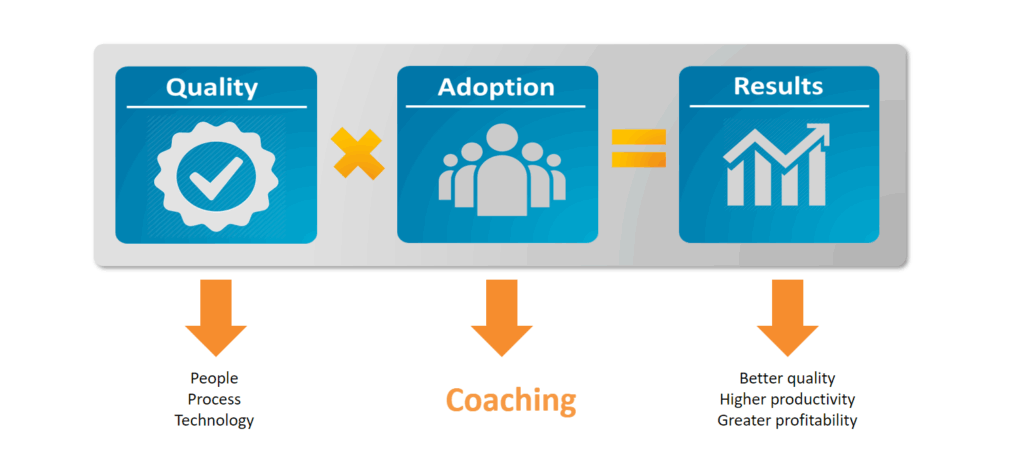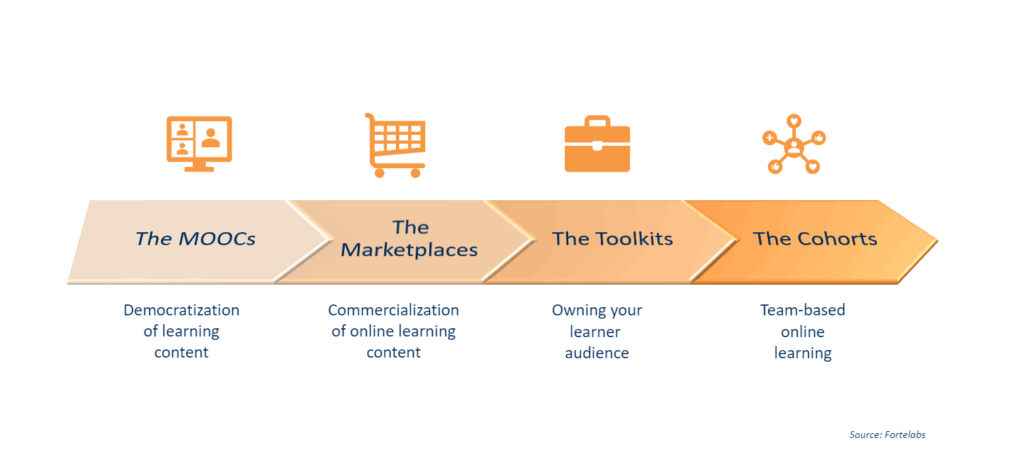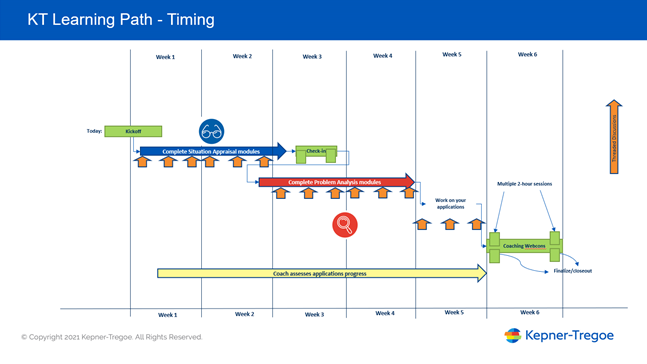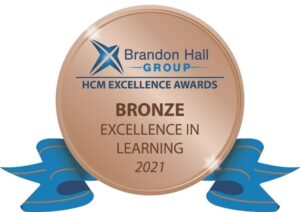Part 3 of 3
In part 2 we spoke about the critical lenses of innovation for new learning solutions and the concept of learning loops. In our last blog we will focus on how to best transfer what we learned into the real world and the power of cohort-based learning – especially in a virtual environment.
But first, let us shine a particular spotlight on what it takes to make training stick and the topic of coaching.

The value of any training can only be measured in results – typically they relate to things like quality, productivity, or profitability.
To get to these results, we need to have quality ingredients. Sometimes these are new technologies, sometimes new processes – and sometimes it’s a new set of skills. However, no value is ultimately gained if none of these things get adopted.
That is where the critical role of coaching lies. Coaching provides both positive reinforcement and support. In any change effort, it is the single most powerful lever to drive change – especially when behavior change is involved – because changing behavior is not easy, even under the best of circumstances. It’s even harder when we are under pressure. That’s why we also made coaching a central part of the Problem Solving Learning Path.
Furthermore, our goal was to build the Problem Solving Learning Path on the best practices of online-based learning.
To put this into context, I want to provide you with a short history and outlook of the online training ecosystem, both from a learner but also from a training provider perspective, since it’s been a collaborative evolution that has taken place over the last 10+ years.

This evolution started off with the democratization of learning, as it was called at the time, via “the MOOCs” – promoted mostly by universities and platforms like Udacity – only to find out that many people were starting these MOOCs, but very few people were actually finishing them.
Then “The Marketplaces” came along, like Skillshare, which essentially gave everyone the ability to create, host and distribute their learning content and monetize it. However, lots of content and training providers felt they were giving up too much control over their own content.
“The Toolkits”, like Teachable, provided more end-to-end ownership to instructors for both training and marketing, giving them a bigger piece of the pie. Learning providers could now create a better overall customer experience for their learners. However, the issue of the original MOOCs still largely remained: a lack of learner commitment to follow through on many programs and therefore a lack of actual impact at the learner and at the business level.
This is where “The Cohorts” try to attack: bringing a team-based approach to online learning that creates more of a community, more accountability, and more interaction between individuals.
When these key motivators of learning are aligned, we maximize impact. The results organizations are seeing with this approach are very promising. That’s why we built the cohort concept into the Problem Solving Learning Path, using both grouped learners (the cohort itself) and casting coaching a bit differently than the traditional role or approach – tailoring both the coach role itself and the communications strategy they use with learners throughout the learning journey to maximize the opportunity for results-based behavior change.
Key to this approach is not waiting to coach until after learning takes place. Instead, coaching begins immediately and lasts throughout the learning experience. Each cohort is introduced to their coach at the session kickoff (the first green block on the left-hand side of the diagram below). In the kickoff, the coach outlines timing and progress expectations, how communication channels will work, and the need to interact regularly with other cohort members as well as the coach.

The orange arrows in the diagram indicate regular communications between the coach and learners, typically using a message board tool inside the LMS. In these, the coach consistently reminds learners about progress expectations to help minimize the chances of getting behind or last-minute rush-learning. The coach also uses these communications to pose conceptual questions and encourage the learners to discuss them among themselves. This is intended to help learners self-assess their understanding and provide motivation for ongoing use.
Perhaps the most important use of the regular communications between learners and their coach is to prompt for progress on self-work. As mentioned in part 2 of this series, the learning design promotes regularly applying the concepts they are learning to real-life issues. By having the coach look at this work, learners can receive insights and feedback as they learn each part vs. waiting until the very end of the course. It also ensures that when they arrive at the end-of-course coaching sessions, they come prepared with work-in-hand as well as insights they can share with others about how to use the KT processes correctly and efficiently.
Learners are offered multiple end-of-course coaching session options as a capstone for their learning. Being able to select among the available sessions ensures they can work around scheduling issues, which is particularly important because they cannot get their digital badge or certificate without attending a coaching session.
In the coaching session, the coach engages the learners in discussions about how they overcame difficulties and obstacles, where they gained particularly useful insights, and plans for continued use. What we have found is that this integrated ‘cohort + coaching’ approach significantly increases engagement, completion and provides credible proof-of-value and immediate ROI during the learning path process.
Find out more
We hope you have gained value and insights from this blog series. If it has piqued your interest, you can get more information about the Problem Solving Learning Path here
You can also read more about how Microsoft and KT received a Brandon Hall Award for our overall KT program in a year where there has been a record amount of innovation.




